
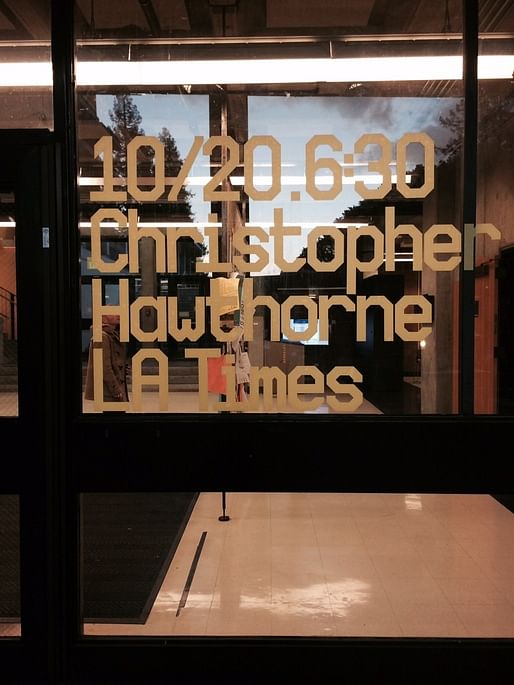 Hello Archinect,
Hello Archinect,
I'm at UC Berkeley in the beautiful East Bay to hear Christopher Hawthorne speak at the College of Environmental Design. From the UC Berkeley website:
Christopher Hawthorne has been the architecture critic for the Los Angeles Times since 2004. Before coming to The Times, he was architecture critic for Slate and a frequent contributor to the New York Times. He is the author, with Alanna Stang, of “The Green House: New Directions in Sustainable Architecture.” Hawthorne grew up in Berkeley and has a bachelor’s from Yale, where he readied himself for a career in criticism by obsessing over the design flaws in his dormitory, designed by Eero Saarinen.
6:44 pm: Introductions. "What really characterizes Hawthorne's writing is his search to find vigor...what creates that vigor and to put it in a setting of culture and place." He understands what is happening in the profession in both a large and small context.
"What's marvelous about what Chris does is that he looks carefully at places, then walks past the boxes and labels and gets at how the piece works itself, and how it's part of an ongoing evolution of the profession."
Christopher Hawthorne: ..."In discussing what I would talk about tonight, we considered Sea Ranch and Los Angeles...but in the end I decided to do what I always hoped, as a student, that architects and critics would do. Which is: to hear about what those people were talking and thinking about at that moment, rather than what they've done in the past. You don't want to sit here and look at sections of the LA Times."
My talk is called 'Basic' for reasons that will become apparent soon...
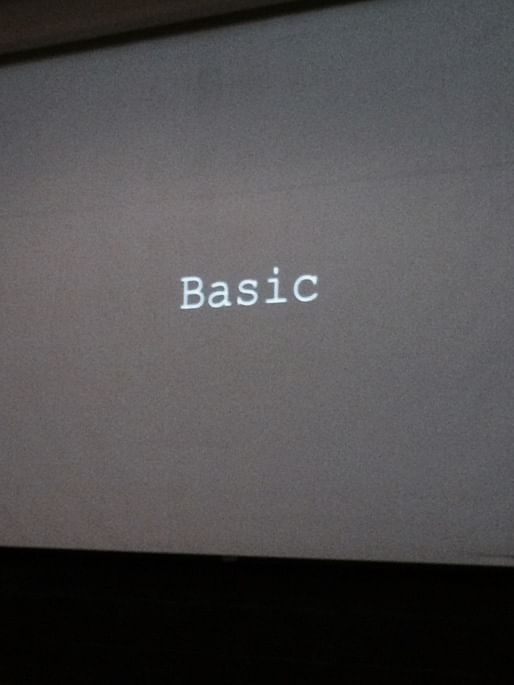
"...If you have questions about writing, I'd also be interested to entertain those at the end of the talk."
...At the Venice Biennale, Rem Koolhaas' show was about the basic building blocks of architecture--ceiling, stairs, etc. So the opening space had a dropped ceiling and the idea was that the show was going to reveal what was behind architecture. If there's one thing Rem is good at, it's putting his finger to the wind and sensing what is there at the time.

In some way the project was a rejection of the star system in architecture. The Biennale for me in the past has often been a good way to see who is new and up and coming, and this was very different.
 Rem's project in some ways builds on a previous exhibition called Common Ground curated by David Chipperfield. As is often the case, the most interesting exhibition was one of the national exhibitions--in this case from Belgium--which foreshadowed Rem's, separating out the parts of architecture and exploring how they age. Even the exhibition catalog was cleverly designed--it was shrink-wrapped and as soon as you took off the wrapper, it started to curl and age in ways that you couldn't reverse.
Rem's project in some ways builds on a previous exhibition called Common Ground curated by David Chipperfield. As is often the case, the most interesting exhibition was one of the national exhibitions--in this case from Belgium--which foreshadowed Rem's, separating out the parts of architecture and exploring how they age. Even the exhibition catalog was cleverly designed--it was shrink-wrapped and as soon as you took off the wrapper, it started to curl and age in ways that you couldn't reverse.
For many of us, there were strong echoes in Rem's exhibition of Rudofsky's book Architecture Without Architects--a book that also came out of a time of crisis for architecture, and concern about the environment. 
There's also the connection between the 'fundamentals' and 'fundamentalism'; Rem doesn't make these choices lightly so I think he would have expected people to consider talk about this connection, which hasn't been forthcoming.
The recent issue of Log also delves into the idea of fundamentals.
In architecture since the crisis, there's been an effort to go back to Platonic forms. Herzog and de Meuron's Parish Museum was redone, changed after a pre-crisis scheme had been developed, and many critics including me thought that the new scheme was very effective.
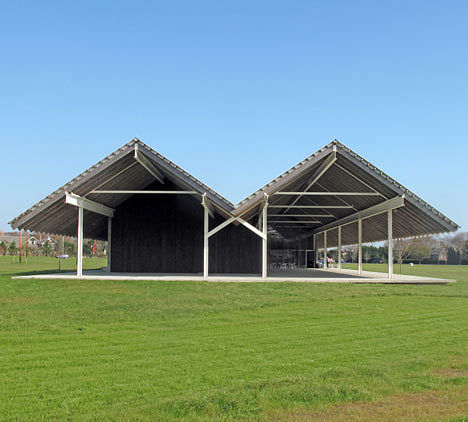
It's dangerous to look at awards as any kind of bellweather, but the political statement to give the Pritzker to Wang Shu may also signal a return to primitive forms.
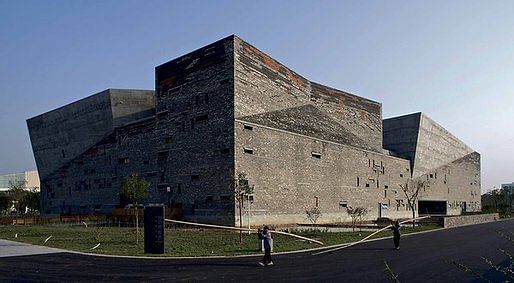
Or Studio Mumbai and it's attempts to talk about regionalism while also playing to a global magazine audience.
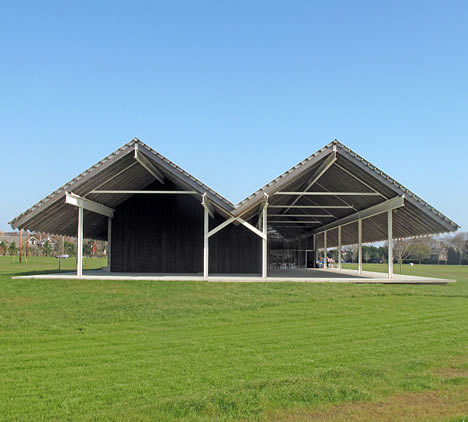
Here's an exhibition at LA's REDCAT gallery right now...The Blue Whale by Cesar Pelli is in the show.
Sou Fujimoto's work is also in this vein--he's very interested in the primitive hut. 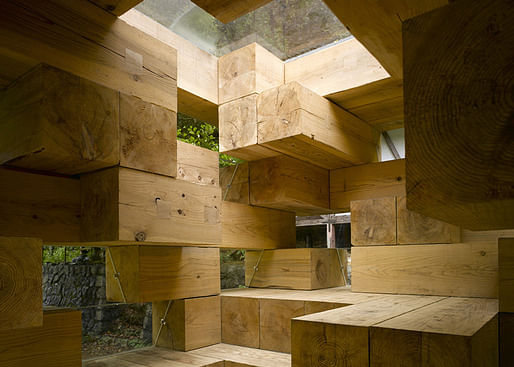
Good luck trying to build this anywhere but Japan, but regardless it's a great essay about this idea.
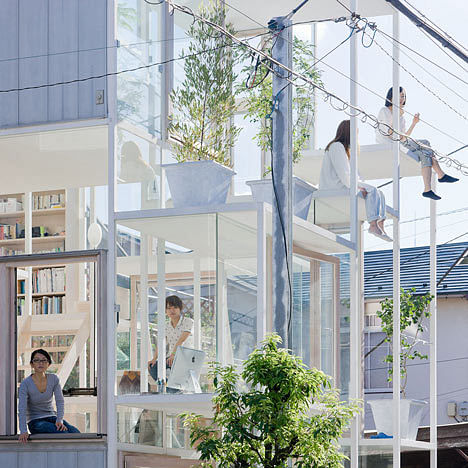
A House for Essex by FAT and Grayson Perry.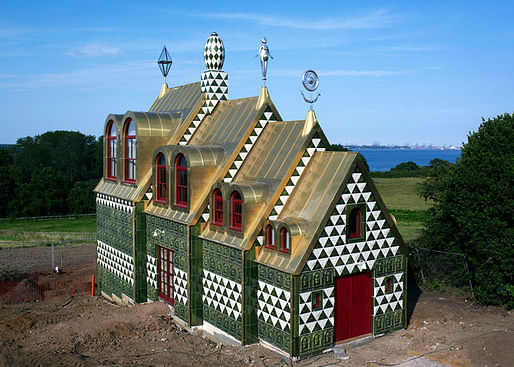
There's a race to see who can go back to the most primitive, the most basic basics. And lately who seems to be winning that race is Chilean architect Smiljan Radić who is moving in a more primordial direction.
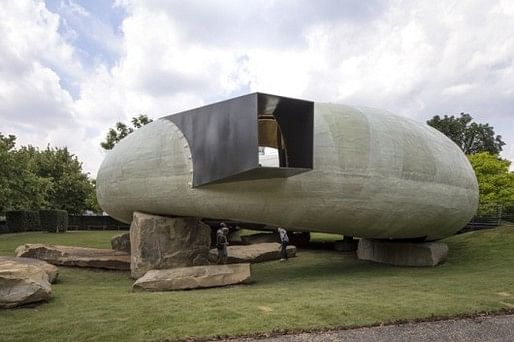
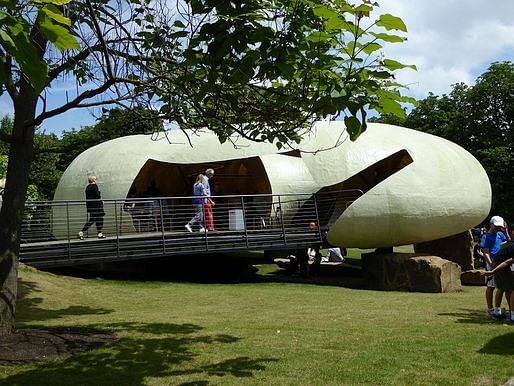
The other recent project that I've been covering quite a bit, that I'd put in this primordial category is Zumthor's project for LACMA. The tar pits are right there in the [lower right corner].
Zumthor is playing with the idea of destruction [which has also played out in popular culture's imagining of this project, since the beginning.] One of the images of the project that's gotten a lot of attention is this one in which these animals look like they're about to be taken over by the tar pit. 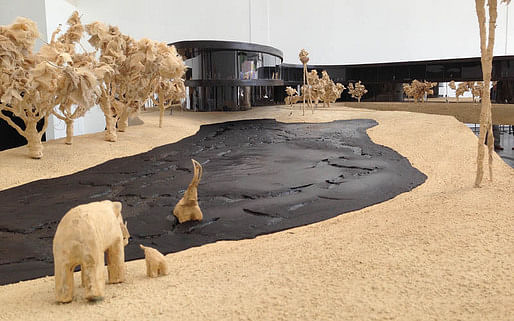
Change in plan: the only way to maintain the square footage and avoid the tar pits has been to turn the building south, which I think weakens the project.
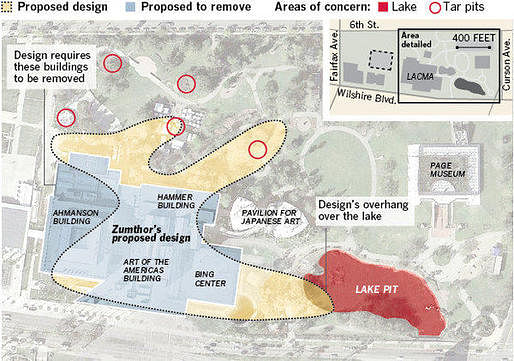

The tar pits continue to be both an inspiration and, I think, frustration for an architect like Zumthor.
Going back to an earlier time when architects were returning to fundamentals, here's Danziger Studio, built by Frank Gehry in 1964. This is before the more aggressive forms that made Gehry famous. It's a deadpan look at the streetscape of Los Angeles.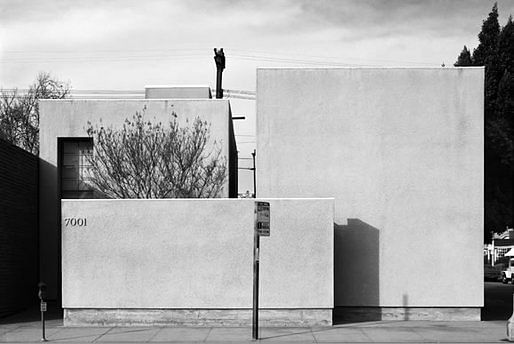
The recurrence of fish for Gehry--I asked him about the fish a few years ago in a series of videos I did for the LA Times--I'll show a short clip [see below--Gehry talks about fish being from millions of years ago, and how the idea just came to him and started to be absorbed into his work.]
So the question is, what's causing this turn? I think it's a reaction to excess in terms of scale and client, if you think about Baku and this Zaha building--projects where the rendering and real building can't be distinguished, or distinguished in disappointing ways.
 There's an environmental element to this, certainly.
There's an environmental element to this, certainly. 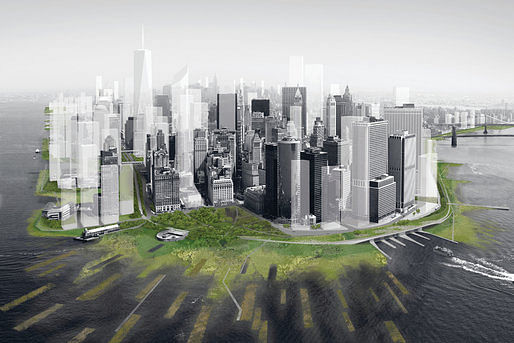

And also a political frustration. One of the things I find fascinating about architecture is the way it highlights struggles--in this case, the failed collaboration between Daniel Libeskind and SOM.

"Here's the building that is soon to be the tallest building on the New York skyline, by Rafael Viñoly. There's a sense that this building is less architecture, than a container for capital--like the skyline of Dubai, capturing excess wealth. There is capital from all over the world to reside in this container."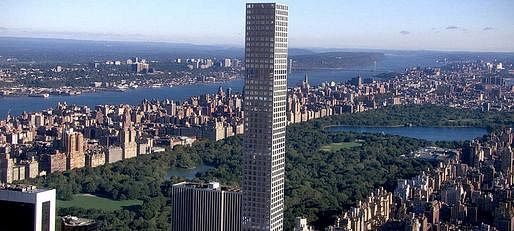
Spotify and our ability today to call up any old song...are related to a kind of retromania. ...We have the strange situation of teenagers listening to the same music as their parents, instead of using music as a form of rebellion. So there's a kind of stagnation in music...and also in architecture.

...The emblematic project for this in Los Angeles is the Ace Hotel, the old United Artists' building. Ace is really great at knowing where a neighborhood is about to turn.

In LA, gentrification is creeping southward. In some ways this is a successful preservation story, for example in the theater, with this Spanish gothic.
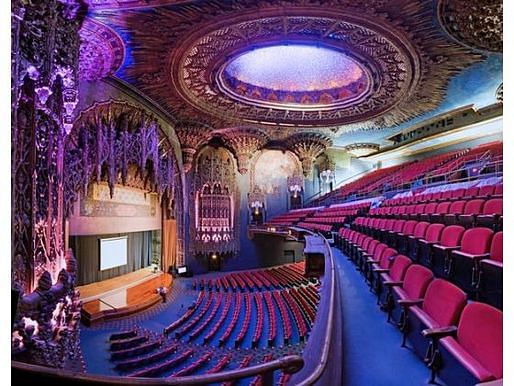
But there's also an anachronistic layering of architectural references. It's different from postmodernism, more about a kind of ease that the current generation feels in moving from one historical representation to another, just like it's easy to move from one track on Spotify to another. There are direct quotations of the Schindler House--not sure how many people drinking cocktails there pick up on that--and to Vienna, and a Mayan cement block style. [Note: I'm pulling images off the internet to illustrate this post, and the pictures I found of Ace Hotel's interior aren't the same ones that CH showed--they're a bit less architect-y].
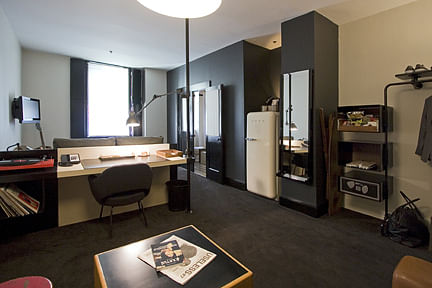
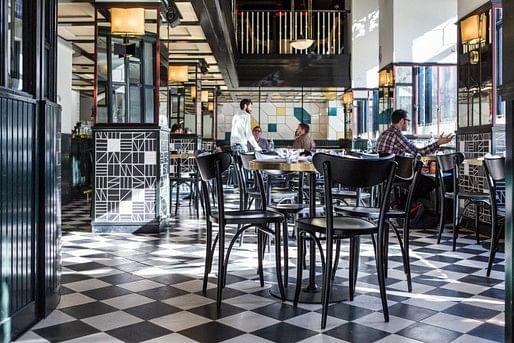
This building isn't discussed that much because the designers are a bit outside architecture culture, or at least out of architecture academia. I think this building deserves a lot more attention that it gets, for being emblematic of this use of history.
Your generation has such a different relationship to history, which I think will be one of the most fascinating chapters to follow in architectural history in the next several years. Thank you very much.
[Applause]
Question from the audience about "the current situation in the bay area." CH: Having grown up here I watch with great interest. If you grow up in Berkeley, you are brainwashed to hate Los Angeles. I've been surprised how much I like Los Angeles. It's incredibly tolerant, it's the least judgemental city I've been in. Although that can cause some problems, in terms of creative work that's a fantastic quality. San Francisco and the Bay Area...strike me as increasingly provincial. It's a more judgmental place.
Seeing what the first wave of dot-com money did to the city, we're seeing 5x that now. I'm more interested in seeing growth and development in San Francisco than in individual projects. Seeing at how Market Street has been remade by tech companies, there's been a sense of ease about history, which gives me optimism. But in general I think in San Francisco there's too much money in too small a place.
Question from the audience about the relationship between quotation and the interior project. CH: I think that has a lot to do with LA, as a place where you can't do "grown-up" architecture. We think of LA as a place where young firms make their name doing interior projects.
In one way there's more freedom because interiors are a part of practice that has been ignored in 'serious' discourse. Freedom gives you room to do terrible things, which also makes room to do some great things. I think there's been an interior turn in LA, and I think there needs to be a more rigorous conversation about what that means, and I don't think architecture schools are doing that.
The offices that I'm most interested in have forced themselves into the fray, and have figured out what it takes to build even though that means imperfections. This goes back to Irving Gill and Schindler and Neutra, but what's different now is a layer of complexity and regulation.
Question from the audience: Unlike the major markets, where you say the individual project isn't happening, are there places in the United States where it is? CH: It's a great question I've been thinking a lot of about--next year I'm hoping to tackle this question of regionalism in the context of a digital architects, especially with younger architects. I wouldn't say there are particular cities that come to mine.
Question from the audience: Are you seeing more interest among your readers about the existing built environment and adaptive reuse? CH: I did a series on boulevards in LA...a city that is so connected to the car. Thinking about the street as public space, park space, in a city that lacks such things. In LA you have to think both at the local and much larger regional scale, and the boulevards are the only things that are changing at both scales.
Also, during the recession, there was not a lot new being produced. I didn't pursue these topics for that reason, though--I have been interested in what happens after an intense 50 years of privatizing public spaces. But now there are new projects again, and I have to think about the balance between talking about the city as well as covering [the traditional critic territory of new construction].
I'm losing my steam here during the question period, but CH also shouts out to Woodbury University as an architecture school that reflects the demographics of Los Angeles, but also thinking beyond that; casts shade at Patrik Schumacher ("as hard as he tries, parametricism isn't politically relevant"); and mentions his recent piece on MIchael Maltzan's One Santa Fe.
Thanks for reading!
Lian
This blog was most active from 2009-2013. Writing about my experiences and life at Harvard GSD started out as a way for me to process my experiences as an M.Arch.I student, and evolved into a record of the intellectual and cultural life of the Cambridge architecture (and to a lesser extent, design/technology) community, through live-blogs. These days, I work as a data storyteller (and blogger at Littldata.com) in San Francisco, and still post here once in a while.



No Comments
Block this user
Are you sure you want to block this user and hide all related comments throughout the site?
Archinect
This is your first comment on Archinect. Your comment will be visible once approved.